Most gardeners grow African violets due to their ability to bloom all year. If you want to give your garden a colorful bright look, you can plant other plants along with African violets. Grouping other plants with African violets can make your garden even more attractive.
African violets are found in various colors and types. Since African violets have different colors, growing other companion plants like Flamingo flowers, Crotons, and Bromeliads, will give your garden a distinctive look. Pairing them with some beautiful potted plants will also give your interior a colorful look.
Another payoff of growing these companions with African violets is that you won’t have to put any extra for them. They all have similar requirements, like the African violets.
If you are interested in making your garden visually attractive with colorful flowers, this article will help you find suitable companions for your African violets.
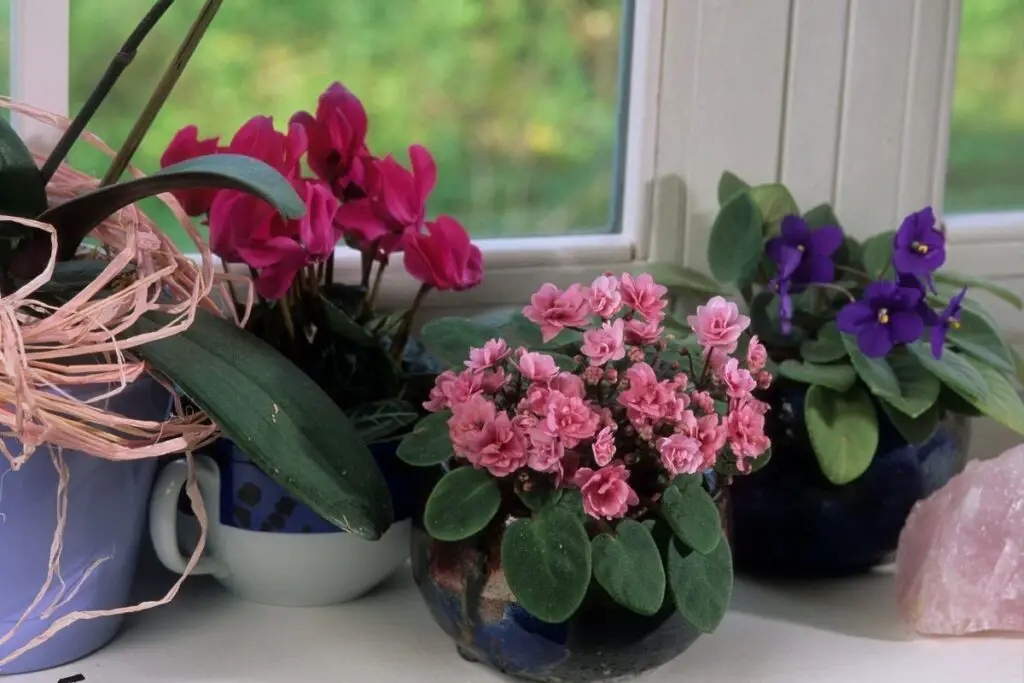
Companions for African violets in the garden
African violets are found in a lot of colors. You will get them in purple, violet, white, maroon, pink and even white.
They are mostly grown as houseplants because they need room temperature for growth and are ideal for growing in pots.
African violets can also be grown outdoors directly in the garden. They will just need your extra attention and effort in the garden.
In both ways, you can grow African violets with companion plants. First, let us talk about outdoor garden companions.
Bromeliads
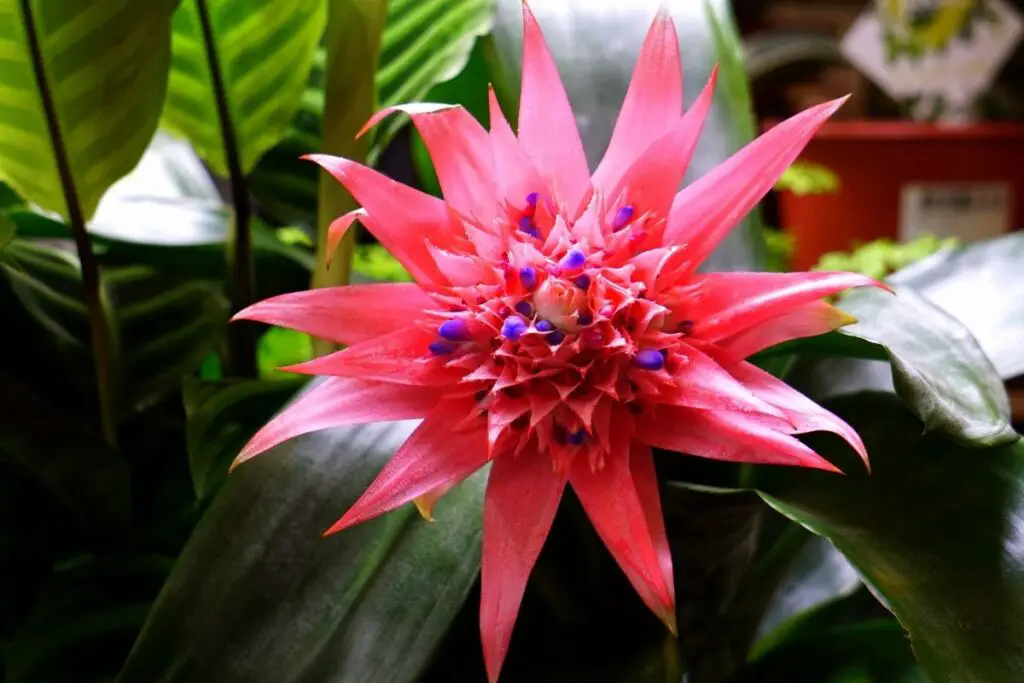
Bromeliads (Bromeliaceae genera) are perennials found in red, green, orange, and yellow colors.
Most African violets have deep colors. Accompanying them with beautiful green, orange, or yellow Bromeliad flowers can give your garden a bright look.
The light requirement is a bit different for these flowers. Some varieties will need bright indirect sunlight, whereas some bromeliads can tolerate direct sun rays.
The soft leaves prefer low indirect light, but the stiff hard leaves will need indirect light. They can grow 18 inches tall, depending on the variety you want to grow.
Some bromeliads will grow 10 feet tall and wide. However, the measurement might vary depending on the varieties. You can plant them beside the African violets. Grow those varieties that can tolerate direct sun.
Make sure that you keep some space in between the plants for airflow. These plants will themselves receive sunlight, and the African violets will receive indirect sunlight through the gaps. This positioning will also look good.
Both African violets and Bromeliads prefer well-draining soil. A soil that can drain the excess water and, at the same time, hold enough moisture will be ideal for both. Both of them enjoy growing in slightly acidic soil.
You can plant Bromeliads anytime, but African violets are mostly planted during the spring.
You can plant Bromeliads while planting the violets. Both will bloom all year round. Since all their requirements are similar, it will be easy for them to grow them together.
Bromeliads will need more or less the same nutrition, care, temperature, and humidity as the African violets. So, you don’t need to put extra effort behind them individually.
Looking for gardening supplies? We have tested 100's of products before recommending them to you guys. Check out our best pick below:
| Image | Gardening Supplies | Best Price? |
|---|---|---|
 Top
Top Top
Top | Raised Garden Bed Kit | Check On Amazon |
 | XLUX Soil Moisture Meter, Plant Water Monitor, Soil Hygrometer Sensor for Gardening, Farming, Indoor and Outdoor Plants, No Batteries Required | No Results |
 Top
Top Top
Top | 82 Pcs Garden Tools Set and Extra Succulent Tools Set | Check On Amazon |
 | Joeys Garden Expandable Garden Hose with 8 Function Hose Nozzle, Lightweight Anti-Kink Flexible Garden Hoses, Extra Strength Fabric with Double Latex Core, (50 FT, Black) | No Results |
 Top
Top Top
Top | Dual Chamber Compost Tumbler | Check On Amazon |
 Top
Top Top
Top | Sunnyglade Plant Stakes | Check On Amazon |
 Top
Top Top
Top | Organic Cold Pressed Neem Seed Oil | Check On Amazon |
 Top
Top Top
Top | Mighty Mint Gallon :-Insect and Pest Control Peppermint Oil | Check On Amazon |
 Top
Top Top
Top | Scotts DiseaseEx Lawn Fungicide | Check On Amazon |
 Top
Top Top
Top | Jacks Classic 20-20-20 All Purpose Fertilizer | Check On Amazon |
 Top
Top Top
Top | 30,000 Seeds Pollinator Attracting Wildflower Mixture | Check On Amazon |
 Top
Top Top
Top | Survival Vegetable Seeds Garden Kit-Over 16,000 Seeds | Check On Amazon |
Flamingo Flower
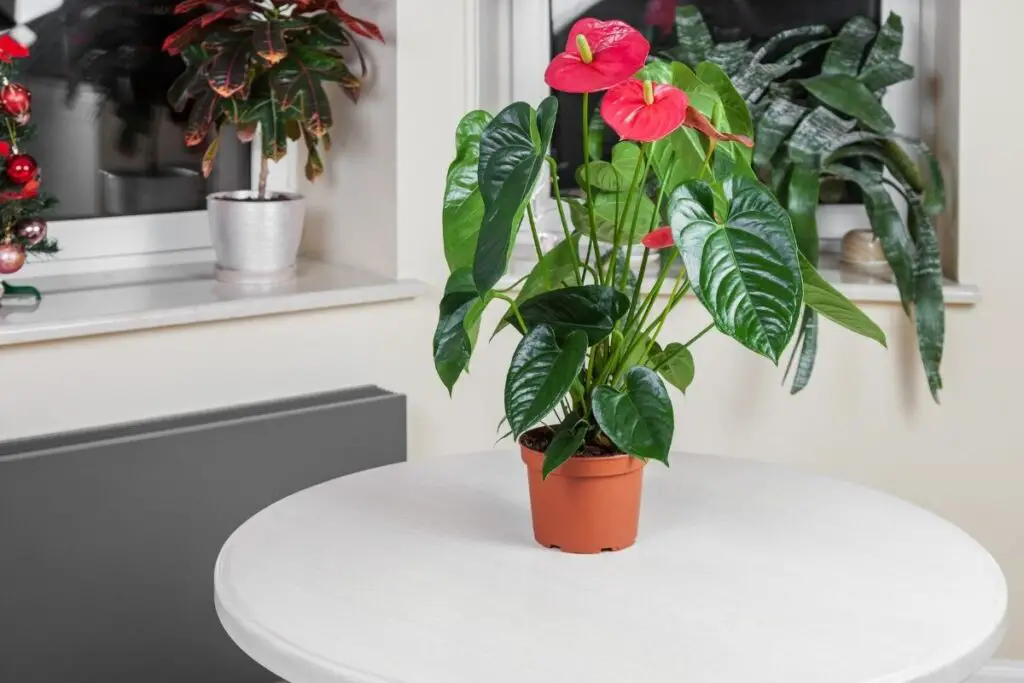
Flamingo flowers or Anthurium flowers are available in two colors – red and pink. It also has a contrasting white spadix. The flowers look like heart-shaped leaves and can grow up to 12 to 18 inches tall.
These flowers will give a different look to your garden because of their flower shapes. When grown with African violets, they will provide a unique look to your garden.
Both African violets and Flamingo flowers will bloom all year round. You can keep them behind or beside the African violets. The red and pink flowers, along with the different colors of violets, will look incredible.
Both of them enjoy indirect sunlight. Make sure that your soil bed has an artificial shade to protect them from the direct sun. Planting them in the north or east direction will help them get bright indirect sun.
Also, African violets and Flamingo flowers need similar nutrition. You need to water them adequately on time and prepare a well-draining soil mix so that they don’t have to face problems like overwatering, underwatering, or pests.
If you want companions for your African violets, try growing Flamingo flowers side by side. When both these will grow and flower, they will make your garden pretty.
Gloxinia
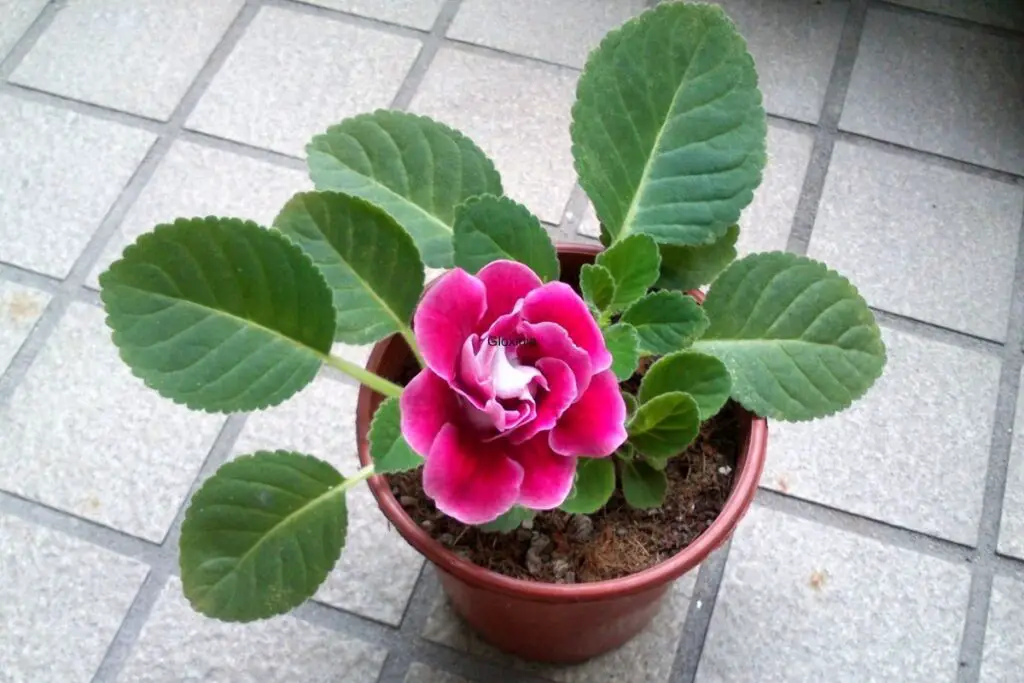
Gloxinia is a gorgeous flowering plant that is available in various colors. Their color ranges are white, pink, red, blue, and purple. You may also find them in dual tones, like a white center with white rims or a red flower with white margins.
You can plant both of these during spring. The only difference is Gloxinia blooms in the summers, whereas African violets can bloom all year round. When both the plants bloom, you will enjoy looking at your garden because of these vibrant colors.
Gloxinia will grow up to 6 to 8 inches tall and wide. You can place them beside the African violets. Both more or less have the same height.
Both of them prefer bright indirect sunlight. So if you are growing African violets with artificial shade, growing Gloxinia along with it will be just fine.
Gloxinia is not challenging to take care of along with African violets.
Growing them together won’t be much of a hassle. Both require the same care and nutrition. Both of their growing seasons are the same, so it will be easy to fertilize them together at that time.
Companions for African violets indoors
African violets rarely grow outdoors and are mostly grown indoors because they need room temperature for thriving.
In the indoors, too, you can grow African violets along with some other companions. Different plants will require different pots.
So for pairing, keep all the potted plants in a patio, bench, or big tray. You can also grow these on your balcony.
Now let us see what the companion plants are:
Croton plants
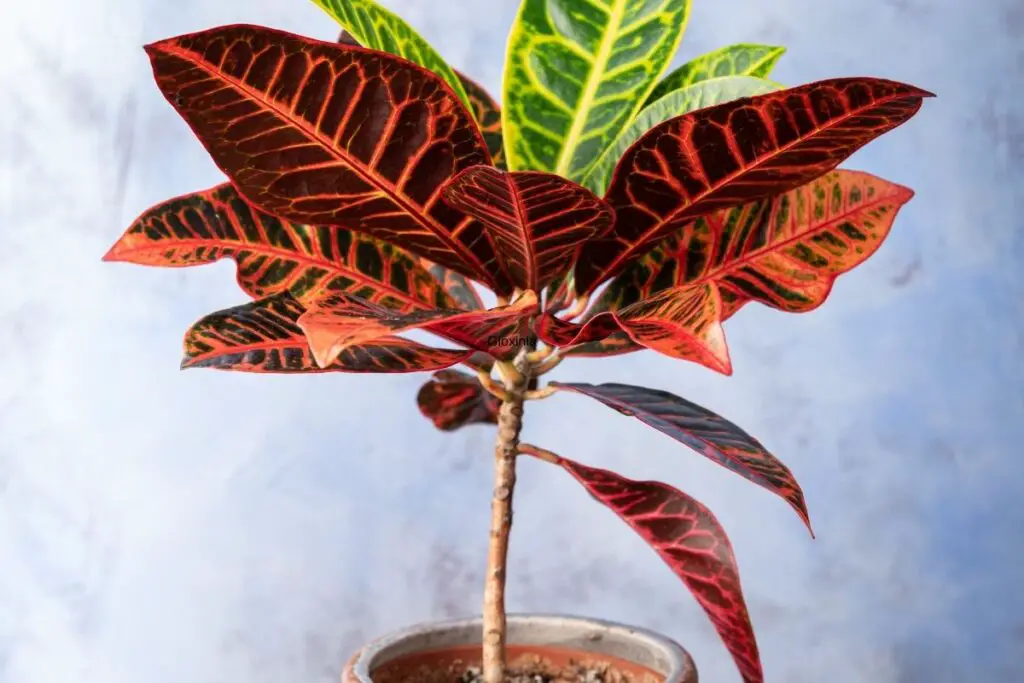
These are beautiful leaf plants and will create a beautiful look when grown with African violets. They grow 10 feet tall. There are minor varieties that grow up to 1 to 3 feet or 3 to 8 feet. They prefer direct sun rays.
If you want to protect your African violets from the direct sun rays, place them in the direction away from the direct sun rays. But make sure at least some sun penetrates through the gapping of the leaves and touches the African violets.
It is best to grow these two together because both like well-draining soil mix and their pH requirement is slightly acidic.
While making their potting mixes, you won’t have to put extra effort into making different potting mixes. You can use the same for both.
At the time of watering, use room temperature for both. Croton will need more frequent watering than African violets. But do not overwater it.
Both of them need a balanced fertilizer with an NPK value of 20:20:20. This is another advantage of growing Crotons and African violets together. You do not have to buy or use different fertilizers. One fertilizer will work for both.
As you can see, both of their care and requirements are more or less the same. Grouping these two plants will be a great choice.
Both prefer room temperature and high humidity. Another advantage of grouping these two is that they will create a natural humidity of their own. Moreover, Crotons will protect African violets from direct sun.
Crotons are available in purple, green, yellow, red, orange, and pink. Growing crotons with African violets will give your interior garden area a stunning and vibrant look. Choose the colors that contrast and look good with the African violets you own.
Philodendrons
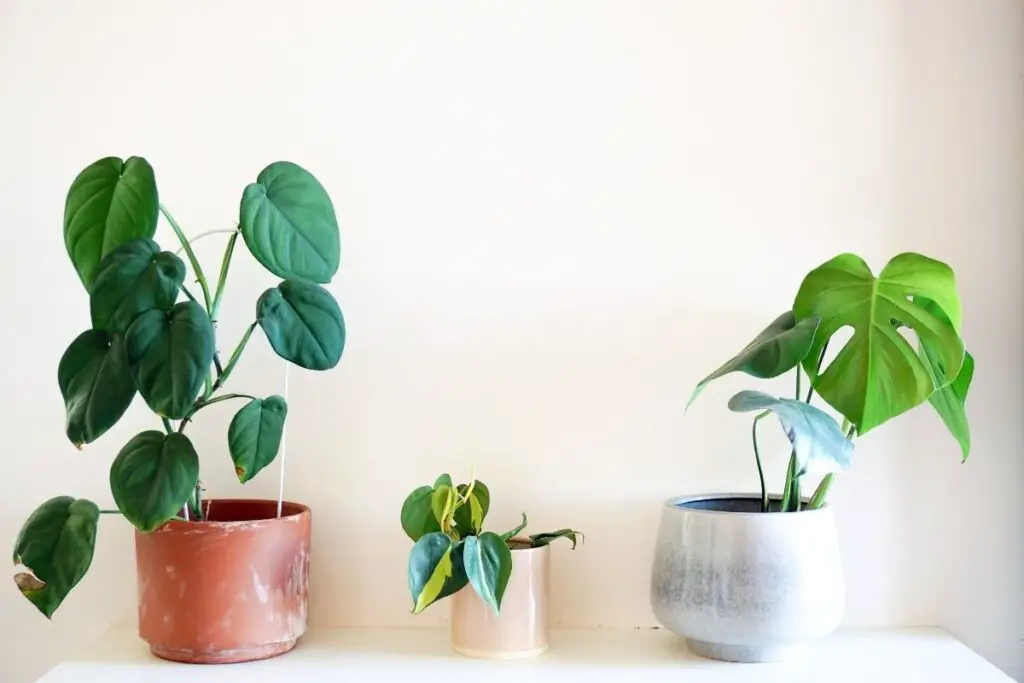
Philodendrons consist of a few colors – green, burgundy, purple, and blue. If you want to grow them with African violet, try choosing variegated philodendrons to match and create a beautiful color contrast for your interior garden.
Philodendrons have different varieties. You can grow the ones that grow 3 feet tall. Keep them beside the African violets. Colorful African violets with colorful leaf plants will give a beautiful look.
Both need bright indirect sunlight to grow well. Both need infrequent watering once a week and prefer consistently moist soil. You can follow the same watering routine for both.
While making the potting soil for them, you don’t have to make separate ones for both of them.
You can make the potting mix in a large amount and divide in their pots. You can use a balanced fertilizer for both of them. They require fertilizers during the same time of the year.
As all their care routine is similar, growing them as companions will not be difficult for you. Moreover, colorful flowers of African violets and the colorful leaves of Philodendrons will give your room a unique design.
Prayer plant
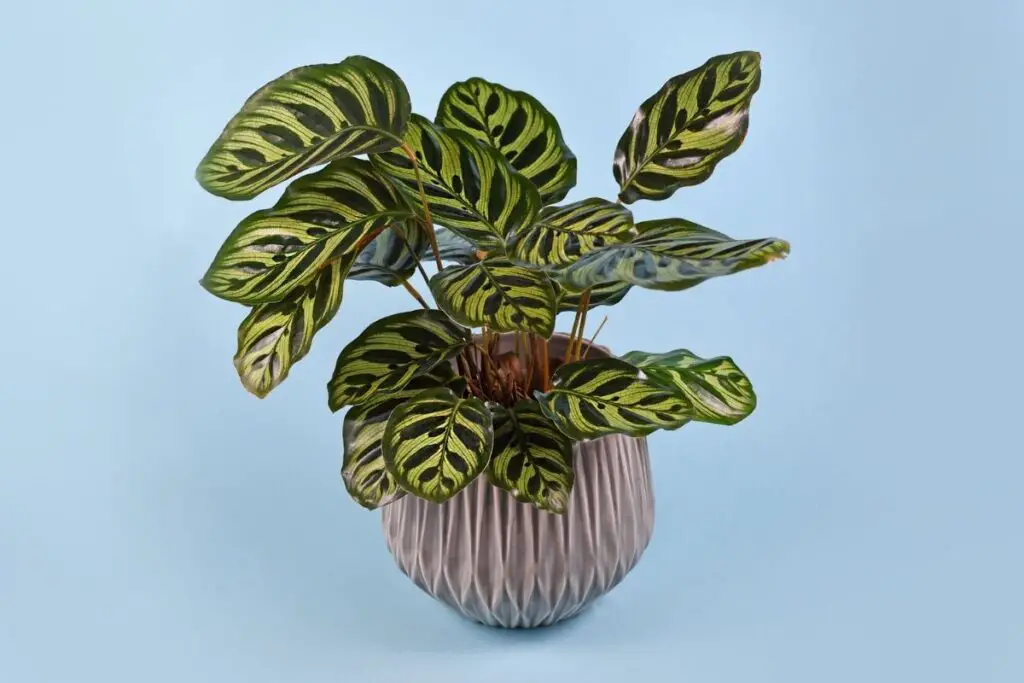
This plant looks very different. Some varieties have purple marks in between the veins of the leaves, while some varieties have deep green velvety leaves with yellow splotches going down the midrib.
Growing this plant with such unique leaves, along with the colorful African violets, will give your room a completely different look.
Prayer plants are foliage plants. But they produce small flowers in pinks and purples. However, that is very rare in the spring.
They prefer slightly acidic to neutral soil pH levels. Both of them like indirect sunlight. Growing them side by side in a patio or bench near a north-facing window will be great.
Both African violet and Prayer plants prefer moist soil.
You don’t even have to worry about their fertilizing. Both will grow very well when fertilized with a balanced fertilizer (10:10:10 or 20:20:20).
Fertilize them from spring through fall. However, the Prayer plant might need more fertilizer than African violets. This is the only difference.
Other than fertilizing, all other care and requirements are similar for both. Prayer plant grows 10-12 inches tall and 15-18 inches wide. Keep them behind the African violets to create an even look. Try to keep some space. However, a little crowd will help to maintain perfect humidity.
Final words
All the plants mentioned above will share similar requirements with the African violets. One or two requirements might be exceptions like the fertilization of the Prayer plant or the sunlight requirement of Croton. Other than these exceptions, the rest are almost the same.
It will be great to grow the plants mentioned above as a companion to African violets. They will give both your indoor and outdoor garden a very vibrant and outstanding look which will be of quite visual interest.
There are many other plants too which you can grow as a companion to African violets. So, your African violet will never be lonely.
Source: Wikipedia, African violet: Classical breeding, African Violet Society of America, In vitro propagation of African violet, University of Florida, North Dakota State University, The University of Georgia.
